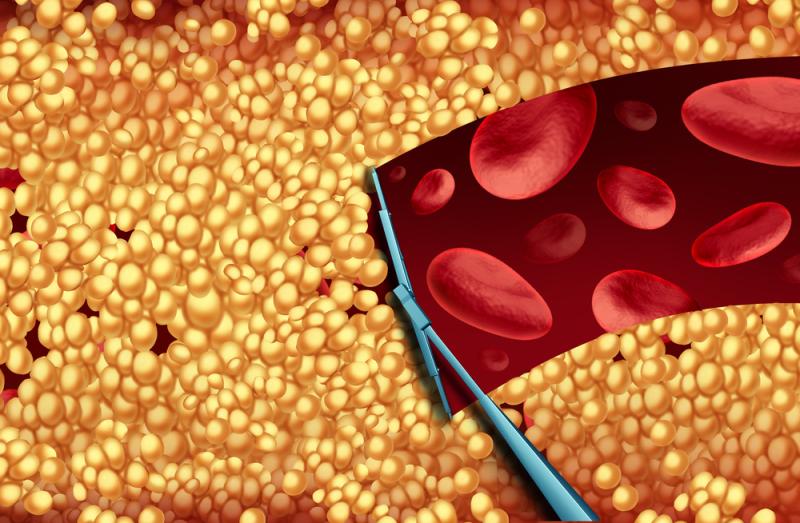Alirocumab lowers LDL-C in adults with homozygous familial hypercholesterolaemia





Treatment with alirocumab significantly reduces low-density lipoprotein cholesterol (LDL-C), as well as other elevated atherogenic lipids and lipoproteins, in adults with homozygous familial hypercholesterolaemia (HoFH) at week 12, a study has shown.
In addition, “alirocumab was generally well-tolerated, with no clinically significant differences between alirocumab and placebo groups with regard to safety findings,” according to the researchers.
In this randomized, double-blind, placebo-controlled, parallel-group, phase III trial, 69 adult patients with HoFH were randomly assigned 2:1 to either alirocumab or placebo. The safety and efficacy of alirocumab 150 mg was evaluated every 2 weeks. Percent reduction from baseline in LDL-C vs placebo after 12 weeks of treatment was the primary endpoint.
At baseline, 67 patients were on statin, with 59 receiving high-intensity dose; 50 were on ezetimibe; 10 were on lomitapide; and 10 underwent apheresis. Mean LDL-C was 295.0 and 259.6 mg/dl in the alirocumab and placebo groups, respectively. [J Am Coll Cardiol 2020;76:131-142]
At week 12, the reduction (least squares mean difference) in LDL-C percent change from baseline was –35.6 percent: alirocumab, –26.9 percent vs placebo, 8.6 percent (p<0.0001). Other atherogenic lipids decreased at week 12: apolipoprotein B, −29.8 percent; nonhigh-density lipoprotein cholesterol, −32.9 percent; total cholesterol, −26.5 percent; and lipoprotein(a), −28.4 percent (p<0.0001 for all).
Serious adverse events (AEs), permanent treatment discontinuations, or deaths due to treatment-emergent AEs were not reported during the double-blind treatment period.
“Monoclonal antibodies to PCSK9 such as alirocumab act via the LDL receptor (LDLR) pathway and reduce LDL-C by blocking the action of PCSK9, leading to increased LDLR numbers on the liver cell surface and increased clearance of LDL-C from the circulation,” the researchers said [Glob Cardiol Sci Pract 2017;doi:10.21542/gcsp.2017.2]
The LDL-C reduction observed in the present study was relatively smaller compared with that seen in the ODYSSEY trial (61-percent reduction in patients with heterozygous familial hypercholesterolaemia and nonfamilial hypercholesterolaemia), which was likely due to the genetic differences in the LDLR pathway in the current HoFH population. [N Engl J Med 2015;372:1489-1499]
“In addition, the LDL-C response to alirocumab was more variable in patients with HoFH than in other forms of hypercholesterolaemia, reflecting the significant genetic heterogeneity we observed in this HoFH population,” the researchers said. “However, responses also varied markedly between patients with identical mutations in another study with responses correlating with in vitro residual LDLR expression.” [Arterioscler Thromb Vasc Biol 2018;38:592-598]
Of note, the current study was limited by its relatively short trial duration and the exclusion of patients <18 years of age.
“As patients with familial hypercholesterolemia have elevated LDL-C from birth, treatment as early as possible is recommended. Early initiation of statin therapy has been shown to reduce occurrence of cardiovascular events in patients with heterozygous familial hypercholesterolaemia,” the researchers said. [Eur Heart J 2014;35:2146-2157; J Clin Lipidol 2017;11:602-616; N Engl J Med 2019;381:1547-1556]
“Further research is needed to assess the impact of PCSK9 inhibition on long-term clinical outcomes in patients with HoFH and develop therapeutic interventions that function independently of LDLR pathways,” they added.